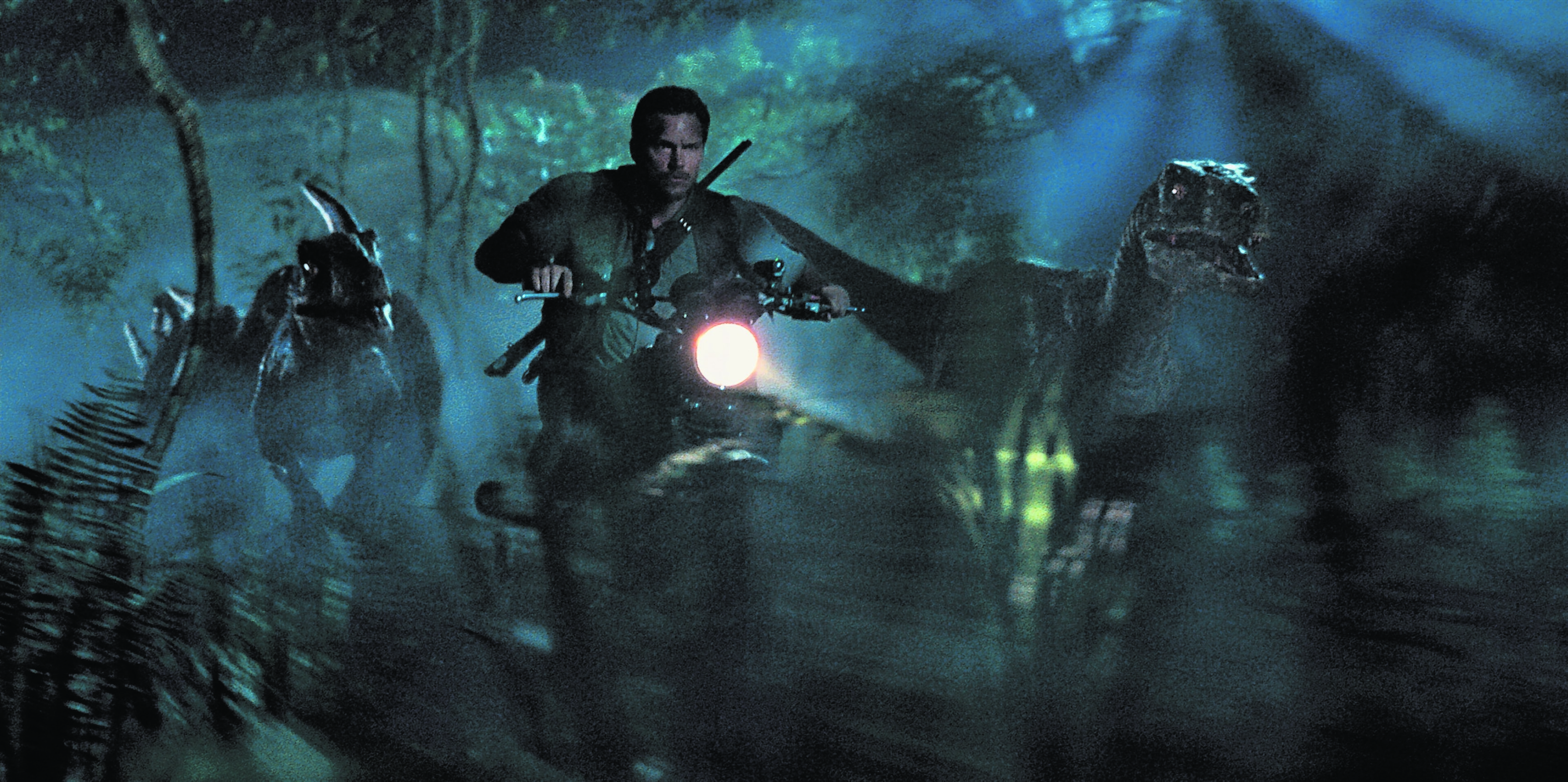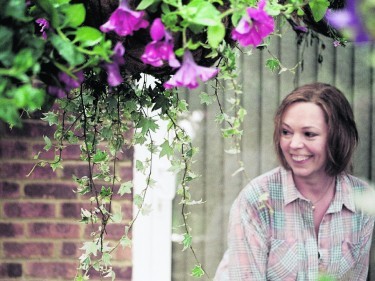JURASSIC WORLD (12A)
4 stars
In the original Jurassic Park, scientists cloned dinosaurs on a tropical island and quickly discovered their arrogant folly.
“Life breaks free. It expands to new territories and crashes through barriers,” wisely observes Jeff Goldblum’s doom-mongering chaos mathematician.
His words reverberate throughout this fourth instalment of the blockbusting dino-franchise.
Director Colin Trevorrow and three co-writers step back in time, using the structure and heightened human drama of the first film as a solid template for this return to Isla Nublar.
Jurassic World begs, borrows and affectionately steals from the 1993 box-office behemoth, including a cameo for the Mr DNA animation and a set-piece in the iconic visitor centre (now overgrown).
Two stricken children are a focal point when the park goes into meltdown, and mission control boasts a nerdy computer wizard (Jake Johnson) for mild comic relief.
If the nuts and bolts of the screenplay are unabashedly retro, the special effects are undeniably state-of-the-art, realising creatures great and small, which chomp through countless extras and the main cast.
This is by far the bloodiest chapter of the Jurassic saga, if not quite the best.
The Jurassic World theme park opened to the public in 2005 and now welcomes more than 20,000 visitors a day.
Claire Dearing (Bryce Dallas Howard) oversees park operations, while Dr Henry Wu (B.D. Wong) plays God in the laboratories, splicing DNA strands to create terrifying new breeds.
“Consumers want them bigger, louder, more teeth,” Claire tells a group of investors.
Thus, the ferocious and highly intelligent Indominus Rex is born.
“This will give the parents nightmares,” shudders park CEO Simon Masrani (Irrfan Khan), who took up the mantle from John Hammond to open an isle of prehistoric wonders.
When the Indominus Rex escapes her paddock, Claire begs naval officer turned animal-behaviour specialist Owen Grady (Chris Pratt) for help.
He has been working on the island with Vic Hoskins (Vincent D’Onofrio), head of InGen Security, on a top-secret project involving four captive velociraptors.
Claire is distraught because her nephews, Zach (Nick Robinson) and Gray (Ty Simpkins), are trapped in the middle of the bloodbath.
She implores Owen to rescue the boys, tracking them by footprints and scent.
“I was in the navy, not the Navajo,” he reminds her.
Jurassic World is a muscular, rollicking romp that captures some of the adrenalin-pumping thrills and jaw-dropping awe we felt more than 20 years ago when Steven Spielberg first unleashed dinosaurs back into the world.
Pratt is an instantly likeable hero and he catalyses a simmering screen chemistry with Howard as the workaholic who faces the dino-pocalypse in highly inappropriate footwear.
D’Onofrio glowers as one of the film’s boo-hiss villains, who views the creatures as expendable assets.
“We own them. Extinct animals have no rights,” he snarls.
Action sequences are orchestrated at a lick, seamlessly integrating digital trickery with live action including chaotic scenes of a flock of pteranodons plucking visitors from the ground.
“Remember: something chases you, run,” advises Zach and Gray’s mom at the beginning of the film.
Wise words.
LONDON ROAD (15)
3 stars
Event cinema – live screenings of theatre and opera productions, exhibitions, music concerts and other entertainment – has become increasingly popular and lucrative.
The National Theatre in London has been at the forefront of this revolution, broadcasting more than 20 productions by satellite since June 2009, including Phedre with Helen Mirren and Danny Boyle’s Frankenstein with Benedict Cumberbatch and Jonny Lee Miller.
In a neat reversal, the theatre’s artistic director, Rufus Norris, embraces the cinematic medium with this daring screen version of the critically adored verbatim drama London Road.
The groundbreaking stage work, which premiered in April 2011, documents the real-life discovery of the bodies of five women in Suffolk in 2006 in the words of residents of the titular Ipswich street.
“This is what they said. Exactly as they said it,” confirms the film’s sombre opening credits.
A media scrum including journalist Simon Newton (Michael Schaeffer) descends upon Ipswich, where locals are gripped by fear after the murders of five women, who all worked as prostitutes in the area.
“If it had happened in London, no one would mind, cos everyone gets stabbed in London,” observes one of the locals at a Neighbourhood Watch meeting.
The residents of London Road, including bubbly mother Julie (Olivia Colman) and enigmatic neighbour Dodge (Paul Thornley), are obvious targets for TV crews because prostitutes continue to tout for business outside their homes.
“He was always being propositioned. Poor sod,” confesses resident Rosemary (Nicola Sloane), pointing to her overweight husband, Ron (Nick Holder).
Two giggling schoolgirls wander around a local cafe, casting accusing glances at men and whispering: “You automatically think ‘It could be him’.”
A creepy taxi driver called Mark (Tom Hardy) is one possible suspect, telling a passenger that he has a fascination with serial killers, but that doesn’t mean he is one.
When London Road resident Steve Wright is arrested by Suffolk police, battle lines are drawn between locals, invasive media and the working girls, represented on screen by Vicky (Kate Fleetwood).
By expanding London Road from the claustrophobic confines of a theatre stage, Norris’s film lacks some of the electrifying tension of its original incarnation.
The original 11-strong cast, who embodied more than 70 characters, reprise roles on screen, flanked by more recognisable faces including Colman and Hardy.
Alecky Blythe and Adam Cork’s innovative musical score is still impressive with the backing of the BBC Orchestra, and Javier de Frutos’s accentuated choreography looks terrific on a wider canvas.
The rhythm, pitch and metre of Blythe’s recorded interviews are replicated in the sung dialogue, which is a far cry from the usual verses and soaring melodies of big-screen musicals. However, audiences should persevere, because there are moments of startling brilliance captured on screen by Norris and his team.


